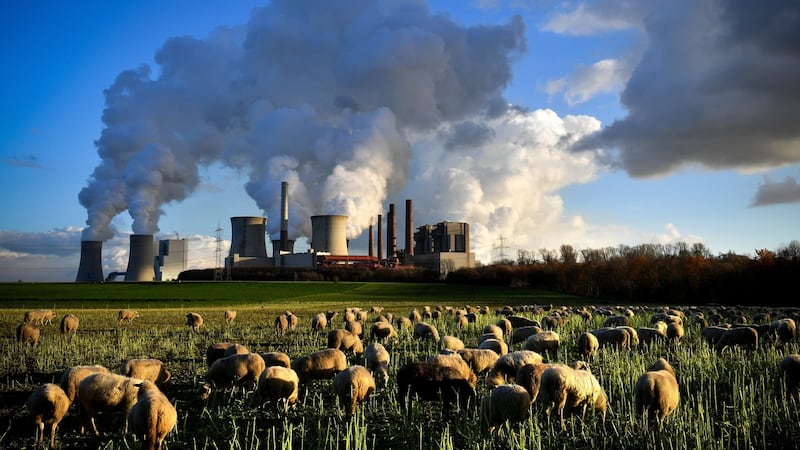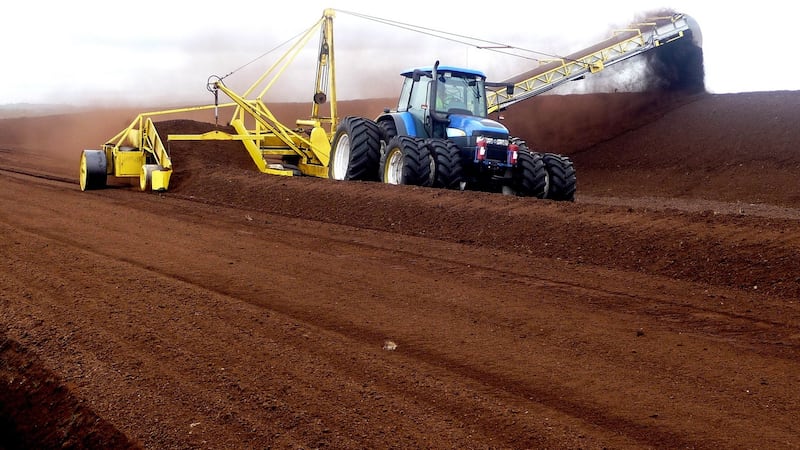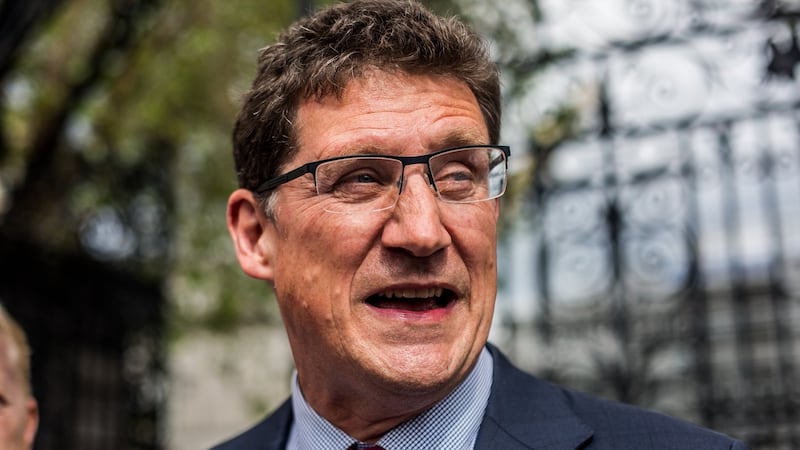What happened to “the climate election”, where the issue would take over all others?
Ireland was among the first countries in the world to declare last year that we are living in "a climate and biodiversity emergency".
Despite having little more than a decade to change how we consume, live, and use energy – in short, cut carbon emissions, ease off fossil fuels and embrace genuine sustainability – Election 2020 suggests that, for many voters, does not amount to a crisis.
Some pundits have distilled crunch issues down to lifestyle, notably how people are living their lives right now and the absence of “feel good”.
Through that prism, it’s understandable that housing (key question: how am I ever going to afford to buy a property?); health (why are hospital services creaking in providing basic services?); and economics (why does disposable income remain depleted despite the boom?) dominate – notwithstanding unprecedented concern about the fate of Planet Earth concentrated in the younger generation. Auction politics is a different matter.
Short Dáil terms and proportional representation voting demand close marking of rivals and narrow focus, so notable momentum on climate action is parked. The only problem is there is every indication that global warming will exacerbate those health and housing problems and undermine personal wealth, if not collectively addressed promptly.

What is the realpolitik?
It means the ground is being ceded to the Greens, according to University College Dublin climate researcher Sadhbh O'Neill, who has evaluated manifestos for One Future Ireland (OFI), a cross-society alliance pushing nine key climate demands.
“The bigger parties don’t want to lead,” she says. They suspect many necessary actions will be unpopular; they want wiggle room and to be able to make scapegoats of smaller parties.
“Brave and bold decisions are not being ventilated; parties are hiding behind very safe language.”
This means, O’Neill believes, voters and the media must ask them how the crisis is going to be addressed with urgency.
She is not endorsing any particular position on the left-right spectrum; rather it’s about ensuring the correct response to the latest scientific evidence – and judging manifestos through that lens.
The all party-consensus fashioned in the past 18 months is the way to go; “building on that, rather than walking away”.
Is there a whit of difference on climate policies?
The 2019 all-party climate action committee report is the backbone identifiable in most manifestos. It fed into the Government’s climate action plan but the missing piece is the driver of scaled-up action; a governance structure with legally binding targets. It featured in the Climate Change (Amendment) Bill that fell with the election being called.
That said, differences are clear on carbon tax; the national herd; and the balance of roads versus transport investment.
While left-wing parties are advocating big increases in subsidised or free public transport, Sinn Féin and People Before Profit are against carbon tax increases. Sinn Féin has bold targets on renewables and boosting public transport, but its position on carbon tax “does not stand up” when the evidence shows it shifts behaviours, though it’s not a silver bullet, O’Neill says.
Fine Gael and Fianna Fáil are for decarbonisation but not cutting the national herd – pinning all hopes on Teagasc's masterplan to reduce emissions in the sector.
Climatologist Prof John Sweeney says big parties are not showing stepped-up ambition, and are "still being held to ransom by the agricultural lobby".
Fine Gael is on a trajectory of cutting emissions by 2 per cent annually, which is "wholly inappropriate", though he concedes Minister for Climate Action Richard Bruton indicated support in December for the EU's Green New Deal (GND) target of a 55 per cent reduction over the next decade. But it has committed to achieving carbon neutrality by 2050 to avoid "climate catastrophe".
Fianna Fáil has backed the OFI demand for an 8 per cent annual cut but has nothing on how it can be done.
Most parties have ambitious programmes to retrofit houses without comprehensive costings. Labour is promising to retrofit 100,000 houses a year, though skills shortages in the construction sector are not addressed.
The Greens’ climate elements are substantial but weak on costs. In O’Neill’s verdict, their agriculture chapter is most impressive as it “bravely takes charge” on the unequivocal need for a new model of farming; diversification, shifting from livestock and supporting biodiversity within farming.
For Fianna Fáil and Fine Gael, it’s an expansionist “business-as-usual” scenario.
Sweeney cautions about underestimating the need for a Just Transition, with parties viewing it as a Bord na Móna/midlands issue as peat extraction ends when impacts on communities will be more far-reaching.

What’s absent, blocking the way to radical decarbonisation?
The manifestos are weakest on the biggest issue – how to decarbonise sufficiently to meet 2030 targets to match Paris pact and GND requirements.
There is a glaring lack of attention to making Ireland climate-resilient with extreme weather requiring major protection of coastlines, cities and those vulnerable from flooding – though Fine Gael has committed €1 billion for this.
There is precious little beyond the Greens on the biodiversity crisis .
What will be the climate trade-offs in forming a new government, if Greens are in the mix?
Leo Varadkar insists it will be possible to form a government with the Greens if the maths is right, but his party has underlined there will be no cuts to livestock numbers, and investment in roads to support rural Ireland will continue.
In any discussions with the Greens, he said he would be concentrating on cutting emissions and addressing the biodiversity issue. So it will be down to rebalancing with scaled-up funding of public transport and active travel (cycling and walking).
A national land-use plan and agreement on a major retrofitting programme will be high on the Greens’ shopping list. Negotiations will be in a similar vein, if Fianna Fáil is the main party. With Sinn Féin a player, carbon tax becomes a difficult issue.
How can Ireland get on the right course?
It's about implementation and how we pay for climate action. Ireland has never fallen short on ambition or promises when it comes to climate change, according to Dr Paul Deane of MaREI energy research facility in UCC. "Just over 10 years ago, we committed to the most ambitious climate targets in Europe, but action and fulfilling promises has been a problem."
We have missed emissions-reduction targets for transport, homes and agriculture by 95 per cent, failed to meet our clean energy commitments and will have to purchase permits to meet these failed obligations at huge cost – Green Party leader Eamon Ryan predicts that could add up to €7 billion.

Climate action costs money, so finance and investment are vital to the ability to transition to a cleaner economy, Deane adds. This means investment in infrastructure such as bus and cycle lanes, home retrofitting, electric vehicle charging points and forestry. Analysis suggests €500 per citizen per year for the next 30 years is needed. So “understanding how we will pay for climate ambition is important”.
So the most pertinent doorstep question is: how do parties intend to plan and prioritise the investment needed to accelerate and scale up climate actions to get Ireland to zero emissions?










